E-Book Gallery for Microsoft Technologies: Azure (EN)
Download content for Azure, ASP.NET, Office, SQL Server, SharePoint Server and other Microsoft technologies in e-book formats. Reference, guide, and step-by-step information are all available. All the e-books are free. New books will be posted as they become available.
|
E-Books in English
Azure
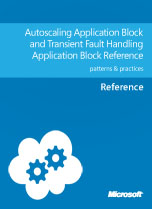 |
Reference The Autoscaling Application Block provides a mechanism for adding autoscaling behaviors to Windows Azure applications based on predictive usage patterns or reactive rules. The Transient Fault Handling Application Block provides a set of reusable and testable components for adding retry logic into your Windows Azure applications by using Windows Azure SQL Database, Windows Azure storage, Service Bus and Caching Service. This makes your Windows Azure application more reliable and resilient to transient faults (such as temporary network connectivity issues or temporary service unavailability). This also improves overall application stability. The blocks are part of the Microsoft Enterprise Library Integration Pack for Windows Azure. Applies to: Windows Azure SDK for .NET (includes the Visual Studio Tools for Windows Azure), Windows Azure SQL Database, Windows Azure Service Bus, Enterprise Library 5, Microsoft .NET Framework version 4.0, Microsoft Visual Studio 2010 Source: MSDN Library (patterns & practices) E-book publication date: June 2012 159 pages EPUB | MOBI | PDF | Source content |
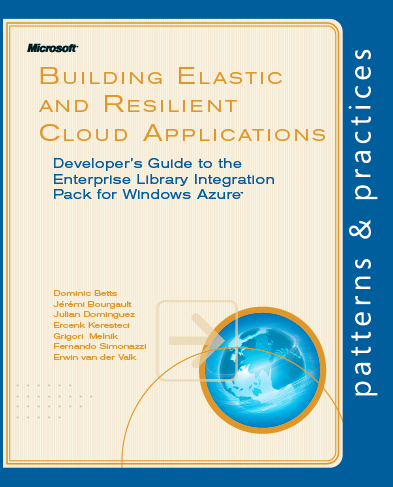 |
Guide The Microsoft Enterprise Library is a set of reusable application blocks that help developers meet common enterprise software development challenges. The Microsoft Enterprise Library Integration Pack for Windows Azure is an extension to the Microsoft Enterprise Library 5.0 that can be used with Windows Azure. It includes the Autoscaling Application Block, the Transient Fault Handling Application Block, a protected configuration provider and the Blob configuration source. Applies to: Windows Azure Source: MSDN Library (patterns & practices) E-book publication date: June 2012 220 pages EPUB | MOBI | PDF | Source content |
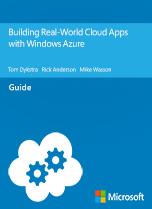 |
Tom Dykstra, Rick Anderson, Mike Wasson Guide This e-book walks you through a patterns-based approach to building real-world cloud solutions. The patterns apply to the development process as well as to architecture and coding practices. The content is based on a presentation developed by Scott Guthrie and originally delivered at the Norwegian Developers Conference (NDC) in June of 2013. Many others updated and augmented the content while transitioning it from video to written form. Applies to: Windows Azure Web Sites, ASP.NET, Visual Studio, Visual Studio Online, Windows Azure Active Directory, Windows Azure SQL Database Source: ASP.NET site E-book publication date: January, 2014 227 pages |
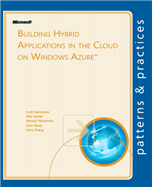 |
Guide This guide focuses on the common challenges you will encounter when building applications that run partly in the cloud and partly on-premises, or when you decide to migrate some or all elements of an existing on-premises application to the cloud. It focuses on using Windows Azure as the host environment, and shows how you can take advantage of the many features of this platform, together with Windows Azure SQL Database, to simplify and speed the development of these kinds of applications. Applies to: Windows Azure, Windows Azure SQL Database, SQL Server, Windows Identity Foundation, Windows Azure Service Bus, Enterprise Library, Windows Azure Diagnostics, Windows Azure Management Cmdlets Source: MSDN Library (patterns & practices) E-book publication date: July 2012 405 pages |
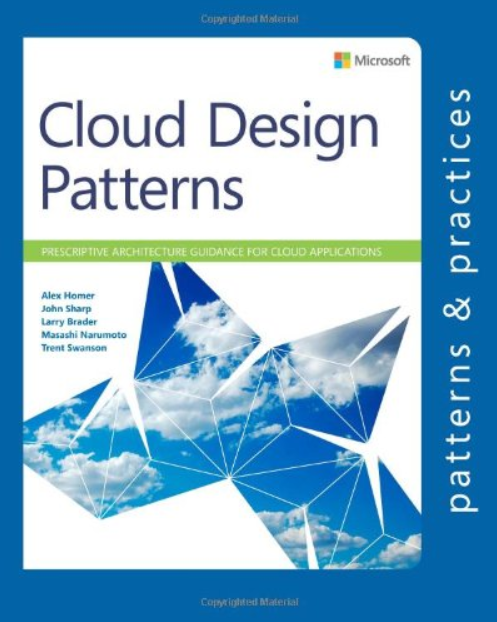 |
Guide Containing twenty-four design patterns and ten related guidance topics, this guide articulates the benefit of applying patterns by showing how each piece can fit into the big picture of cloud application architectures. It also discusses the benefits and considerations for each pattern. Most of the patterns have code samples or snippets that show how to implement the patterns using the features of Windows Azure. However the majority of topics described in this guide are equally relevant to all kinds of distributed systems, whether hosted on Windows Azure or on other cloud platforms. Applies to: Windows Azure Source: MSDN Library (patterns & practices) E-book publication date: January 2014 236 pages EPUB | MOBI | PDF | Code samples | Source content |
 |
Windows Azure Developer Center Quick Step-by-Step Create your first application using Node.js and Windows Azure.
Applies to: Windows Azure, Node.js Source: Windows Azure Developer Center E-book publication date: June 2012 86 pages EPUB | MOBI | PDF | Source content |
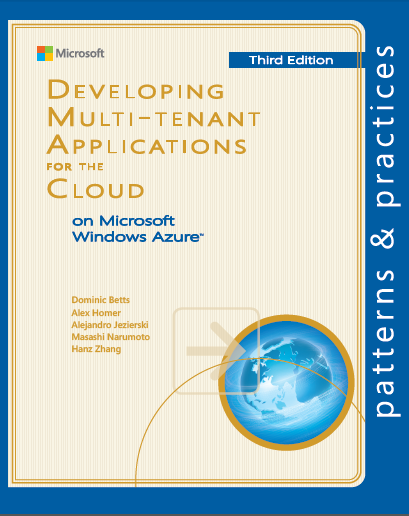 |
Guide This guide is the third release of the second volume in a series about Windows Azure. It demonstrates how you can create from scratch a multitenant, Software as a Service (SaaS) application to run in the cloud by using the latest versions of the Windows Azure tools and the increasing range of capabilities of Windows Azure. The guide is intended for any architect, developer, or information technology (IT) professional who designs, builds, or operates applications and services that are appropriate for the cloud. It is primarily written for people who work with Windows-based systems. You should be familiar with the Microsoft .NET Framework, Microsoft Visual Studio, ASP.NET, SQL Server and Microsoft Visual C#. Applies to: Windows Azure Source: MSDN Library (patterns & practices) E-book publication date: December 2012 246 pages |
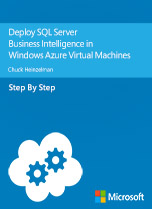 |
Chuck Heinzelman Step-by-Step This document describes and walks you through the creation of a multiserver deployment of SQL Server Business Intelligence features, in a Windows Azure Virtual Machines environment. The document focuses on the use of Windows PowerShell scripts for each step of the configuration and deployment process. Applies to: SQL Server 2012 SP1, Windows Azure Source: MSDN Library E-book publication date: August 2013 90 pages |
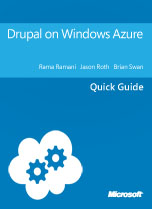 |
Rama Ramani, Jason Roth, Brian Swan Quick Guide This e-book explains the migration, architecture patterns and management of your Drupal based website on Windows Azure. Applies to: Windows Azure Source: MSDN blogs E-book publication date: June 2012 20 pages EPUB | MOBI | PDF | Source content 1 | Source content 2 |
 |
Guide This guide is focused on building highly scalable, highly available, and maintainable applications with the Command & Query Responsibility Segregation and the Event Sourcing architectural patterns. It presents a learning journey, not definitive guidance. It describes the experiences of a development team with no prior CQRS proficiency in building, deploying (to Windows Azure), and maintaining a sample real-world, complex, enterprise system to showcase various CQRS and ES concepts, challenges, and techniques. The development team did not work in isolation; we actively sought input from industry experts and from a wide group of advisors to ensure that the guidance is both detailed and practical. Applies to: Windows Azure Source: MSDN Library (patterns & practices) E-book publication date: July 2012 378 pages |
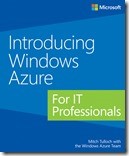 |
Mitch Tulloch with the Windows Azure Team Overview Get a high-level overview of Windows Azure—and get a running start with this flexible cloud platform. Designed for IT professionals, this guide introduces core features and functionality, with technical insights and advice from a Microsoft MVP and members of the Windows Azure team. Topics include Windows Azure solutions, Compute services, Network services, Data services, and App services. Applies to: Windows Azure Source: Microsoft Press E-book publication date: October 2013 142 pages EPUB | MOBI | PDF | Companion files | Source content |
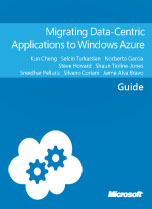 |
Kun Cheng, Selcin Turkarslan, Norberto Garcia, Steve Howard, Shaun Tinline-Jones, Sreedhar Pelluru, Silvano Coriani, Jaime Alva Bravo Guide This guide provides experienced developers and information technology (IT) professionals with detailed guidance on how to migrate their data-centric applications to Windows Azure Cloud Services, while also providing an introduction on how to migrate those same applications to Windows Azure Virtual Machines. By using this guide, you will have the planning process, migration considerations, and prescriptive how to’s needed for a positive migration experience. Capturing the best practices from the real-world engagements of CAT and the technical expertise of the SQL Database Content team, Migrating Data-Centric Applications to Windows Azure can help you simplify the migration process, provide guidance on the most appropriate migration tools, and drive a successful implementation of your migration plan. Applies to: Windows Azure Source: MSDN Library E-book publication date: June 2012 143 pages EPUB | MOBI | PDF | Source content |
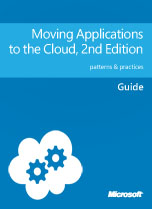 |
Guide This book demonstrates how you can adapt an existing, on-premises ASP.NET application to one that operates in the cloud. The book is intended for any architect, developer, or information technology (IT) professional who designs, builds, or operates applications and services that are appropriate for the cloud. Although applications do not need to be based on the Microsoft Windows operating system to work in Windows Azure, this book is written for people who work with Windows-based systems. You should be familiar with the Microsoft .NET Framework, Microsoft Visual Studio, ASP.NET, and Microsoft Visual C#. Applies to: Windows Azure SDK for .NET (includes the Visual Studio Tools for Windows Azure), Windows Azure SQL Database, Microsoft SQL Server or SQL Server Express 2008, Windows Identity Foundation, Enterprise Library 5, WatiN 2.0, Microsoft Anti-Cross Site Scripting Library V4, Microsoft .NET Framework version 4.0, Microsoft Visual Studio 2010 Source: MSDN Library (patterns & practices) E-book publication date: June 2012 128 pages EPUB | MOBI | PDF | Source content |
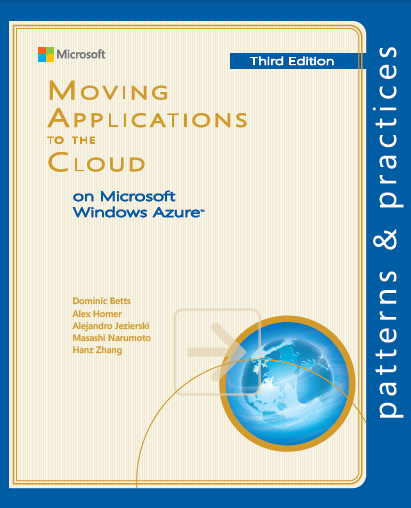 |
Guide This guide is the third edition of the first volume in a series about Windows Azure. It demonstrates how you can adapt an existing on-premises ASP.NET application to one that operates in the cloud by introducing a fictitious company named Adatum that modifies its expense tracking and reimbursement system, aExpense, so that it can be deployed to Windows Azure. To illustrate the wide range of options and features in Windows Azure, this guide and the code examples available for it show a step-by-step migration process that includes using Windows Azure Web Sites, Virtual Machines, Cloud Services, and SQL Database. Together with useful information on developing, deploying, managing, and costing cloud-hosted applications, this guide provides you with a comprehensive resource for moving your applications to Window Azure. Applies to: Windows Azure Source: MSDN Library (patterns & practices) E-book publication date: April 2013 206 pages |
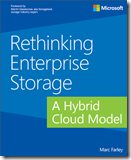 |
Marc Farley Guide Discover how a hybrid cloud model—combining cloud storage services with traditional on-premise storage—can solve multiple storage challenges cost-effectively, all under a single data management system. Focusing on the Microsoft hybrid cloud storage solution, this book offers concise insights on technical, strategic, and practical considerations—so you can begin evaluating potential benefits to your organization. Applies to: Windows Azure Source: Microsoft Press E-book publication date: July 2013 120 pages EPUB | MOBI | PDF | Source content |
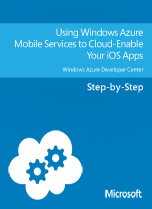 |
Windows Azure Developer Center Step-by-Step This topic shows you how to use Windows Azure Mobile Services to leverage data in an iOS app. In this tutorial, you will download an app that stores data in memory, create a new mobile service, integrate the mobile service with the app, and then login to the Windows Azure Management Portal to view changes to data made when running the app. Applies to: Windows Azure Mobile Services Source: Windows Azure Developer Center E-book publication date: January 2013 11 pages EPUB | MOBI | PDF | Source content |
 |
Windows Azure Developer Center Step-by-Step This section shows you how to use Windows Azure Mobile Services to leverage data in a Windows Phone 8 app. In this tutorial, you will download an app that stores data in memory, create a new mobile service, integrate the mobile service with the app, and then login to the Windows Azure Management Portal to view changes to data made when running the app. Applies to: Windows Azure Mobile Services, Windows Phone 8 Source: Windows Azure Developer Center E-book publication date: January 2013 84 pages EPUB | MOBI | PDF | Source content |
 |
Windows Azure Developer Center Step-by-Step This section shows you how to use Windows Azure Mobile Services and C# to leverage data in a Windows Store app. In this tutorial, you will download an app that stores data in memory, create a new mobile service, integrate the mobile service with the app, and then login to the Windows Azure Management Portal to view changes to data made when running the app. Applies to: Windows Azure Mobile Services Source: Windows Azure Developer Center E-book publication date: January 2013 86 pages EPUB | MOBI | PDF | Source content |
 |
Windows Azure Developer Center Step-by-Step This section shows you how to use Windows Azure Mobile Services and JavaScript to leverage data in a Windows Store app. In this tutorial, you will download an app that stores data in memory, create a new mobile service, integrate the mobile service with the app, and then login to the Windows Azure Management Portal to view changes to data made when running the app. Applies to: Windows Azure Mobile Sources Source: Windows Azure Developer Center E-book publication date: January 2013 87 pages EPUB | MOBI | PDF | Source content |
 |
Jonathan Gao Step-by-Step These Windows Azure and SQL Database (formerly SQL Azure) tutorials are designed for beginners who have some .NET development experience. Using a common scenario, each tutorial introduces one or two Windows Azure features or components. Even though each tutorial builds upon the previous ones, the tutorials are self-contained and can be used without completing the previous tutorials. Applies to: Windows Azure SQL Database Source: TechNet Wiki E-book publication date: November 2012 92 pages EPUB | MOBI | PDF | Source content |
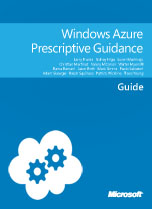 |
Larry Franks, Sidney Higa, Suren Machiraju, Christian Martinez, Valery Mizonov, Walter Myers III, Rama Ramani, Jason Roth, Mark Simms, Paolo Salvatori, Adam Skewgar, Ralph Squillace, Patrick Wickline, Trace Young Guide Windows Azure Prescriptive Guidance provides you with some of the best practices and recommendations for working with the Windows Azure platform. Categories cover planning, designing, developing, and managing a variety of different types of Windows Azure applications, including mobile, enterprise, and consumer-based applications. It also provides guidance for developers using non-.NET applications, libraries, and stacks with Windows Azure. Applies to: Windows Azure, Windows Azure SQL Database, Windows Azure Cloud Services, and Enterprise Integration Applications Source: MSDN Library E-book publication date: May 2012 422 pages EPUB | MOBI | PDF | Source content |
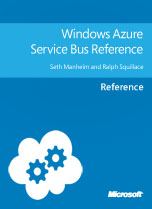 |
Seth Manheim and Ralph Squillace Reference The Windows Azure Service Bus provides a hosted, secure, and widely available infrastructure for widespread communication, large-scale event distribution, naming, and service publishing. The Service Bus provides connectivity options for Windows Communication Foundation (WCF) and other service endpoints – including REST endpoints -- that would otherwise be difficult or impossible to reach. Endpoints can be located behind network address translation (NAT) boundaries, or bound to frequently-changing, dynamically-assigned IP addresses, or both. Applies to: Windows Azure Service Bus Source: MSDN Library E-book publication date: May 2012 260 pages EPUB | MOBI | PDF | Source content |